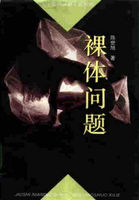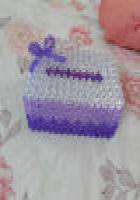SCENES AT FORT LARAMIE
Looking back, after the expiration of a year, upon Fort Laramie and its inmates, they seem less like a reality than like some fanciful picture of the olden time; so different was the scene from any which this tamer side of the world can present.Tall Indians, enveloped in their white buffalo robes, were striding across the area or reclining at full length on the low roofs of the buildings which inclosed it.
Numerous squaws, gayly bedizened, sat grouped in front of the apartments they occupied; their mongrel offspring, restless and vociferous, rambled in every direction through the fort; and the trappers, traders, and ENGAGES of the establishment were busy at their labor or their amusements.
We were met at the gate, but by no means cordially welcomed.Indeed, we seemed objects of some distrust and suspicion until Henry Chatillon explained that we were not traders, and we, in confirmation, handed to the bourgeois a letter of introduction from his principals.He took it, turned it upside down, and tried hard to read it; but his literary attainments not being adequate to the task, he applied for relief to the clerk, a sleek, smiling Frenchman, named Montalon.The letter read, Bordeaux (the bourgeois) seemed gradually to awaken to a sense of what was expected of him.Though not deficient in hospitable intentions, he was wholly unaccustomed to act as master of ceremonies.Discarding all formalities of reception, he did not honor us with a single word, but walked swiftly across the area, while we followed in some admiration to a railing and a flight of steps opposite the entrance.He signed to us that we had better fasten our horses to the railing; then he walked up the steps, tramped along a rude balcony, and kicking open a door displayed a large room, rather more elaborately finished than a barn.For furniture it had a rough bedstead, but no bed; two chairs, a chest of drawers, a tin pail to hold water, and a board to cut tobacco upon.
A brass crucifix hung on the wall, and close at hand a recent scalp, with hair full a yard long, was suspended from a nail.I shall again have occasion to mention this dismal trophy, its history being connected with that of our subsequent proceedings.
This apartment, the best in Fort Laramie, was that usually occupied by the legitimate bourgeois, Papin; in whose absence the command devolved upon Bordeaux.The latter, a stout, bluff little fellow, much inflated by a sense of his new authority, began to roar for buffalo robes.These being brought and spread upon the floor formed our beds; much better ones than we had of late been accustomed to.
Our arrangements made, we stepped out to the balcony to take a more leisurely survey of the long looked-for haven at which we had arrived at last.Beneath us was the square area surrounded by little rooms, or rather cells, which opened upon it.These were devoted to various purposes, but served chiefly for the accommodation of the men employed at the fort, or of the equally numerous squaws, whom they were allowed to maintain in it.Opposite to us rose the blockhouse above the gateway; it was adorned with a figure which even now haunts my memory; a horse at full speed, daubed upon the boards with red paint, and exhibiting a degree of skill which might rival that displayed by the Indians in executing similar designs upon their robes and lodges.A busy scene was enacting in the area.The wagons of Vaskiss, an old trader, were about to set out for a remote post in the mountains, and the Canadians were going through their preparations with all possible bustle, while here and there an Indian stood looking on with imperturbable gravity.
Fort Laramie is one of the posts established by the American Fur Company, who well-nigh monopolize the Indian trade of this whole region.Here their officials rule with an absolute sway; the arm of the United States has little force; for when we were there, the extreme outposts of her troops were about seven hundred miles to the eastward.The little fort is built of bricks dried in the sun, and externally is of an oblong form, with bastions of clay, in the form of ordinary blockhouses, at two of the corners.The walls are about fifteen feet high, and surmounted by a slender palisade.The roofs of the apartments within, which are built close against the walls, serve the purpose of a banquette.Within, the fort is divided by a partition; on one side is the square area surrounded by the storerooms, offices, and apartments of the inmates; on the other is the corral, a narrow place, encompassed by the high clay walls, where at night, or in presence of dangerous Indians, the horses and mules of the fort are crowded for safe-keeping.The main entrance has two gates, with an arched passage intervening.A little square window, quite high above the ground, opens laterally from an adjoining chamber into this passage; so that when the inner gate is closed and barred, a person without may still hold communication with those within through this narrow aperture.This obviates the necessity of admitting suspicious Indians, for purposes of trading, into the body of the fort; for when danger is apprehended, the inner gate is shut fast, and all traffic is carried on by means of the little window.
This precaution, though highly necessary at some of the company's posts, is now seldom resorted to at Fort Laramie; where, though men are frequently killed in its neighborhood, no apprehensions are now entertained of any general designs of hostility from the Indians.















